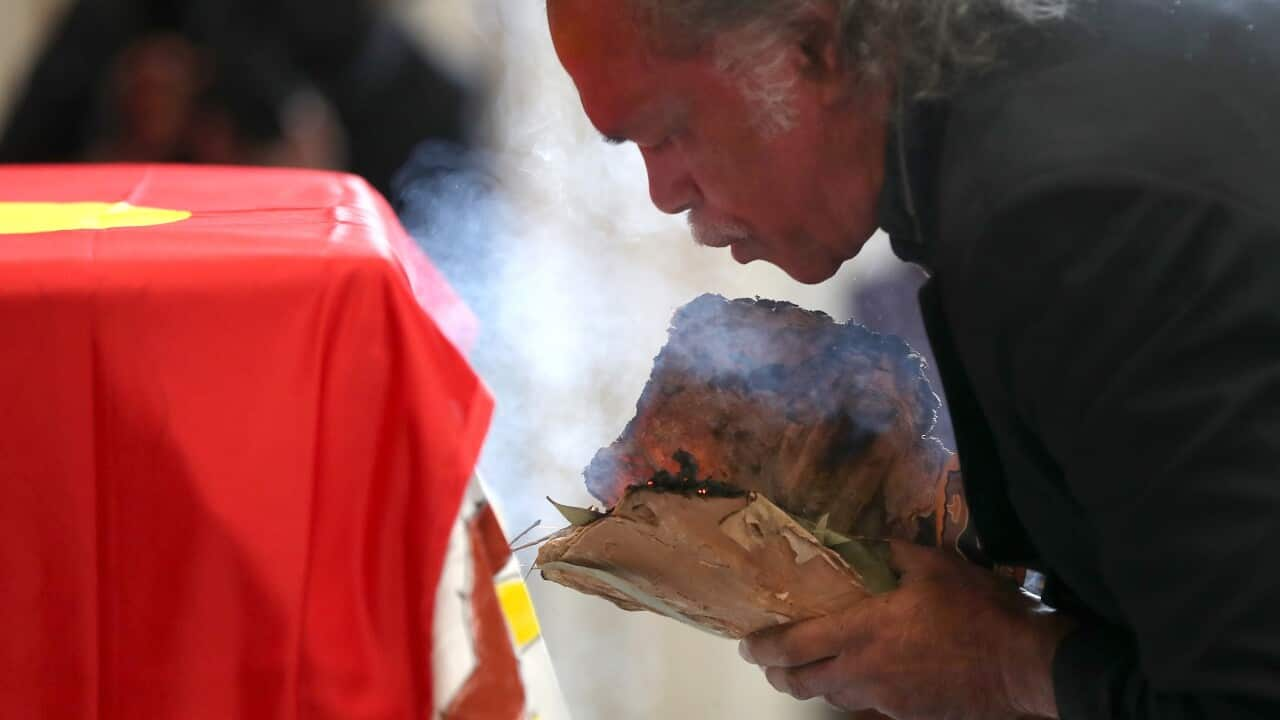On Friday the remains of a Gumbaynggirr man from the New South Wales mid-north coast were returned to Country after being unearthed two years ago by workers excavating a riverside property.
After workers unearthed the remains in Nambucca Heads in 2017, the NSW Office of Environment and Heritage dated them at 750-years -old, male and of Aboriginal descent.
In an emotional sacred ceremony last week, the local community re-buried the bones, with Gumbaynggirr man Michael Jarrett telling NITV News the bones are now “back where they should be”.
“The community is all at ease with the bones being laid to rest in their final resting place,” he said.
“It brought back a lot of pride in our community and a lot of understanding that our people were here right back 750 years ago and even longer.
“Putting them bones back and knowing about the bones really connected the Aboriginal community, we are here and we are going to stay here.”
The ceremony involved a Welcome to Country and prayer in the Gumbaynggirr language by Mr Jarrett, a traditional dance, speeches and a burial ritual.
Lengthy community dispute
The repatriation comes after a long dispute over where the bones should be laid to rest.
Gumbaynggirr Elder Trevor Bellangarry told ABC News last week that two years was too long for the ancestral remains to be away from Country.
"I honestly think that two years was too long, [but] nobody wanted to make a decision — we were just at a stalemate," Mr Bellangarry said.
It is an offence under the National Parks and Wildlife Act to harm an Aboriginal object, but any developers wanting to build on top of such objects, like a burial site, could do so after being provided with an Aboriginal Heritage Impact Permit (AHIP).
Chief executive officer of the Nambucca Heads Local Aboriginal Land Council Michael Donovan said that a lot of the tension stemmed from the fact that the owners of the property pursued efforts to obtain an AHIP.
“There was a bit of anxiety at the time, obviously we didn’t want cultural material, especially the remains of the young Gumbaynggirr man, to be destroyed,” he said.
“While it has taken two years, we have now been able to repatriate the young man back into Gumbaynggirr Country in a respectful and honourable way.”
The NSW Government has sincepurchased the land and construction of a memorial garden has begun.
“The property was subsequently transferred to Nambucca Shire Council to manage in partnership with the local Aboriginal community,” a spokesperson from the NSW Department of Premier and Cabinet told NITV News.
“The Government worked closely with the former landowners to ensure they were fully informed and involved throughout the process.
“The NSW Government will continue to support the local Aboriginal community to protect and manage the site in perpetuity.”
The site will be opened in January and will include signage on the areas Indigenous history written by local Elders.
More cultural awareness needed
Middens were also found on the property, under a house that was believed to have been built in 1879.
Archaeologist Tim Hill said that if a cultural heritage assessment was conducted on the property before any excavation work began, the entire situation could have been avoided. “That was the one thing that I identified as the critical problem… it wasn’t identified as a red flag and that was in part why we had such a complicated issue,” he said.
“That was the one thing that I identified as the critical problem… it wasn’t identified as a red flag and that was in part why we had such a complicated issue,” he said.

Archaeologist Tim Hill said that if a cultural heritage assessment was conducted entire situation could have been avoided. Image Source: Meghna Bali Source: Image Source: Meghna Bali
“If the council had said there’s a chance there’s Aboriginal sites along the river then Terry and Joanna would have most likely done the cultural heritage study.
“Any archaeologist or any Aboriginal person [doing the study] than most likely would have identified the middens under the house.”
Mr Hill also said that middens are identifiable to the Aboriginal community and professionals, such as archaeologists, but may be overlooked by the wider community.
“If white fellas want to live somewhere there is a good chance that 40,000 generations of Aboriginal people, one of them have lived there as well and have left behind archaeological remains,” he said.













